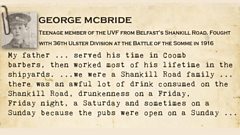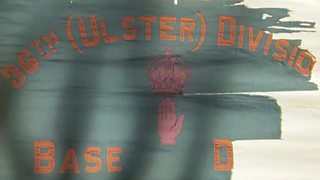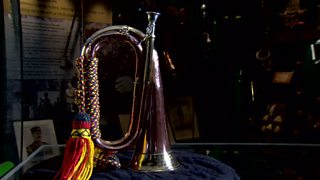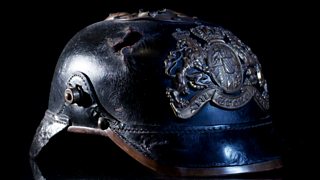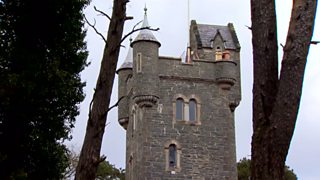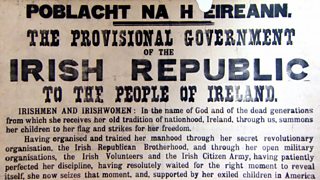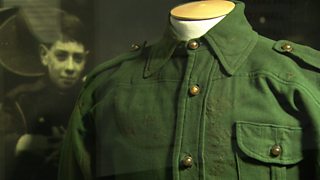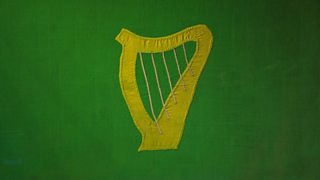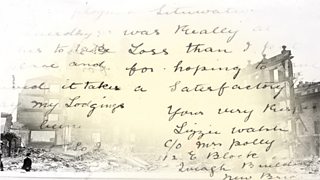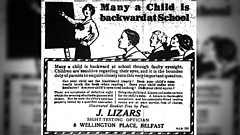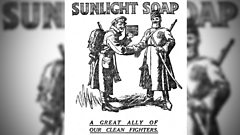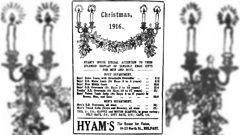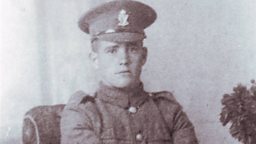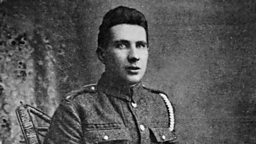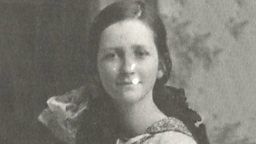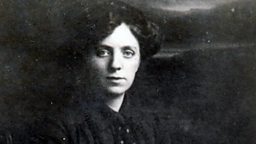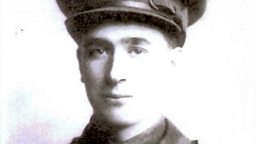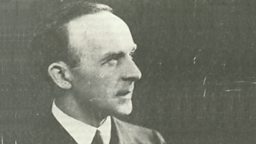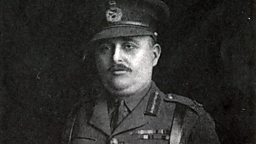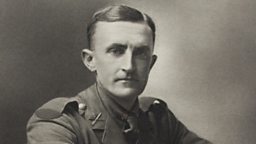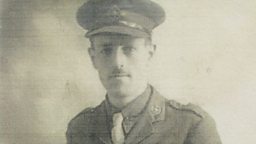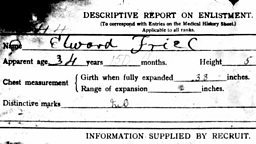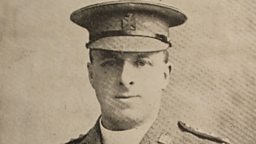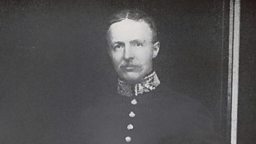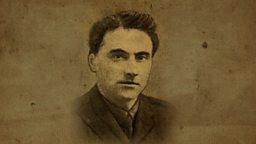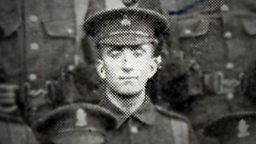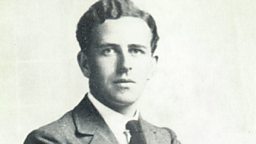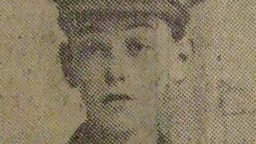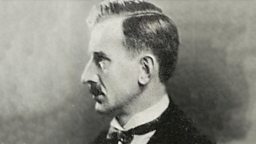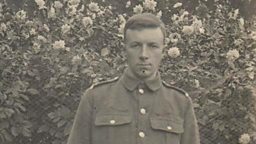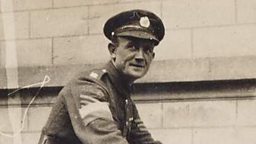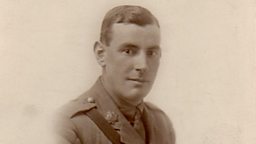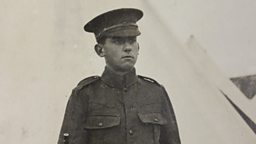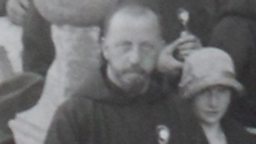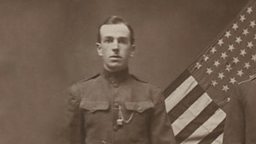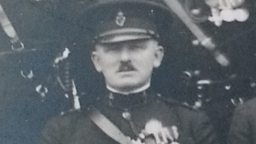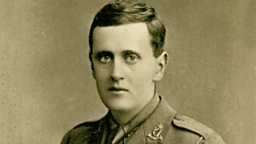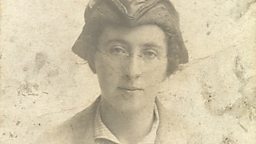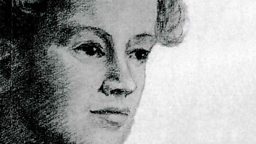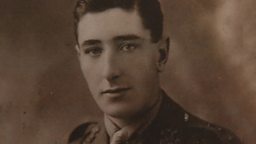George McBride

Soldier and socialist
Aged 17, George lied about his age to enlist in the British Army. "I told the recruiting sergeant I was nineteen and, as I was tall for my age, he believed me." He fought with the 36th (Ulster) Division at the Battle of the Somme.
Life was dull and you must have excitement
After the war, George became a staunch socialist and trade unionist. It was in this capacity that he met , who he went on to marry.
"It was an unlikely partnership, I was a Protestant from the Shankill Road, and an ex-member of the UVF, Winnie was a Roman Catholic and had in fact taken part in the Easter Rising of 1916."
Early life
George McBride was born on 10 February 1898 and grew up in Crimea Street, just off Belfast's Shankill Road.
The eldest of seven children, George was brought up in a Protestant working class family with a strong trade union background.
His father was a member of the Amalgamated Engineering Union (AEU) who took part in the famous 1907 dock strike in Belfast and was an avowed admirer of the strike's leader, Jim Larkin.
First job
When George left school he worked as a messenger boy for the Belfast Telegraph newspaper before becoming an apprentice at James Mackie & Sons, then a major engineering firm in Belfast.
Taking up arms
George McBride joined the Ulster Volunteer Force (UVF) aged 15, reflecting that as "life was dull and you must have excitement".
Aged 17, he enlisted in the British Army despite being underage: "I told the recruiting sergeant that I was nineteen and, as I was tall for my age, he believed me."
Off to war
George enlisted on 4 September 1914 with the 15th Battalion Royal Irish Rifles, 36th (Ulster) Division.
After training in England, he was posted to France in October 1915.
The Somme
Training
Soon after arriving in France, George says there was "an English regiment put in along with us, of the Warwickshires ... to teach us all the little tricks of the trench, the hide and seek of the trench warfare. Digging trenches and filling sandbags and bringing out supplies and all that kind of thing ..."
Trenches
George recalled the trenches as being vast:
"... when you speak of trenches, you must remember that trenches covered thousands of miles all over France. It's like another city, the trenches ..."
He thought the British trenches very poor, saying:
"... our trenches were nothing compared to the German and the French. The French and the German trenches were very well constructed, and I'm told one of the reasons for the good construction of the German trenches and dugouts was because Germany - the Germans had a technical school education long before we had, they had a technical school in every small town. Consequently their officers were well trained in handling materials."
1 July 1916
Years after the event, George described his experience with the 15th Royal Irish Rifles at the Battle of the Somme on its first day:
"... I was with my own wee lads ... the whistle blew, it was over the top, we kept running on, men were being killed ..."
He recalls it as being chaotic: "... then a kind of disorder set in, we didn't seem - it seemed more like a riot than a battle ..."
Eventually, George says, "I was amongst the group that we reached the third line of the German trenches, and we could neither see Germans nor Englishmen ..."
The men then "decided that we'd come back again", and, he says, when it grew dark, "we come back and we jumped down into shell holes for shelter, kept going back and back, until we got into our own reserve trenches."
Prisoner of War
George survived the first day of the Battle of the Somme. He continued to fight, until eventually, he says, he was taken prisoner at the Battle of St Quentin. George was sent to a German prisoner-of-war camp at Giesen.
There, he worked in a stone quarry, where he found the German workmen "were very kind to us, and they were – they'd be glad if the whole thing was over, just they'd get back to their normal way."
After World War One
Return to Belfast
After the war, George returned home. He resumed his employment at James Mackie & Sons, in Belfast, where he had been an apprentice fitter before the war: "I had no difficulty because Mackie took the apprentices back to complete their apprenticeships."
Socialist action
George says that after the war, he became a staunch socialist and trade unionist, and "I joined the Labour Party, I was dissatisfied with the social conditions under which people were living."
At the time, he says, "We had some great fighters and men made great sacrifice ... to get better housing, better houses ... for the people."
Of himself, George states, "I wasn't ambitious, of making anything out of politics, but I was keen that my voice should be heard against injustice."
Marriage to Winnie Carney
In the Labour Party, George says, he met a young woman, "a Miss Winifred Carney, I came from the Shankill Road, and she was a Roman Catholic."
Winifred had taken part in the Easter Rising, he recalled: "she fought in the Dublin Rebellion. She was James Connolly’s secretary ..."
They fell in love, and married in Holyhead on 26 September 1928, George's occupation being given as 'Textile Engineer'.
Later life
After their marriage, George and Winifred lived together on the outskirts of Belfast. However Winifred died, from ill-health, in November 1943. George was now a widower at the age of just forty-five.
Of their respective views during their marriage, he recalled: "Winnie's main theme was always Ireland and the Irish, while my chief concern was economic. She was a nationalist and a socialist, but her basis was nationalism, whereas mine was socialism."
But despite these differences, even forty years after his wife's death, he said: "It's awful being without Winnie."
George said: "I hope I was worthy of her. She seemed so very happy with me."
George McBride died at the Somme Hospital in April 1988.
These pages are based on personal testimonies and contemporaneous accounts. They reflect how people saw things at that time and are not meant to be a definitive history of the period.
The words of George McBride
Voices 16 objects
Voices 16 galleries
Credits
Oral testimony recorded by and reproduced with permission from .
Image supplied by Nigel Henderson, with thanks to the .
Additional information and quotations taken from the book Silent Radical with kind permission of its author, Helga Woggon.
